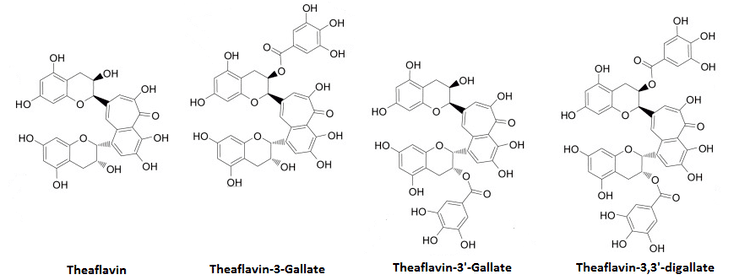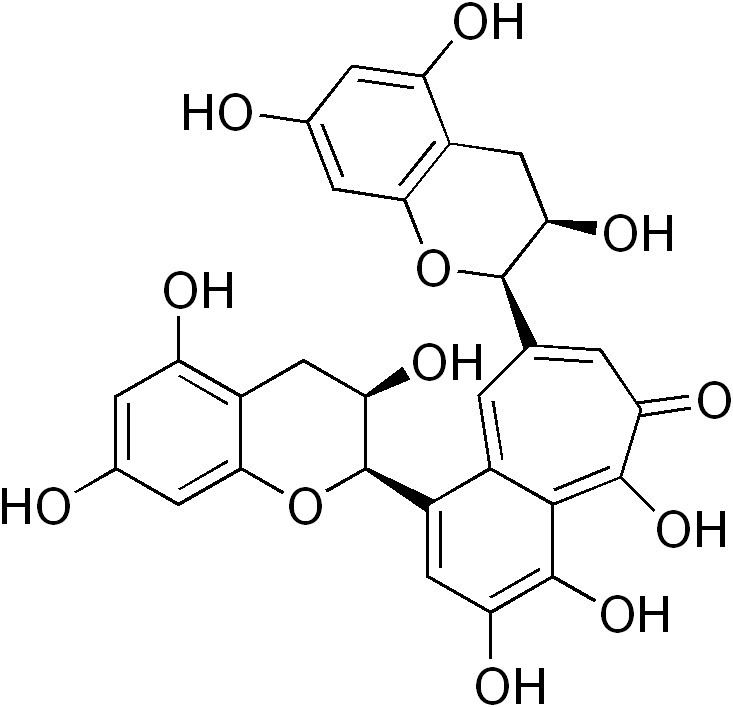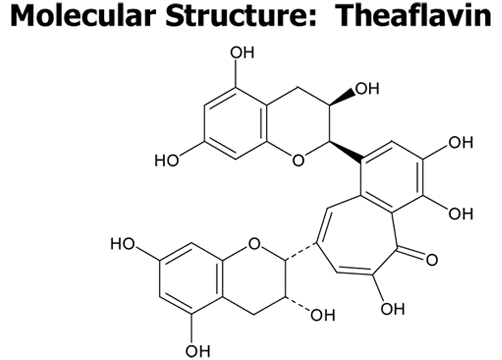Formula C29H24O12 | Molar mass 564.49 g/mol | |
 | ||
Dr gupta about theaflavins
Theaflavin (TF) and its derivatives, known collectively as theaflavins, are antioxidant polyphenols that are formed from the condensation of flavan-3-ols in tea leaves during the enzymatic oxidation (sometimes erroneously referred to as fermentation) of black tea. Theaflavin-3-gallate, theaflavin-3'-gallate, theaflavin-3-3'-digallate are the main theaflavins. Theaflavins are types of thearubigins, and are therefore reddish in color. Epigallocatechin gallate (EGCG) will metabolize into some theaflavins in the liver. Those molecules contain a tropolone moiety.
Contents

What does theaflavin mean
HIV

In in vitro laboratory investigations, several tea polyphenols, especially those with galloyl moiety, can inhibit HIV-1 replication with multiple mechanisms of action. Theaflavin derivatives have been found to have more potent anti-HIV-1 activity than catechin derivatives.

Epigallocatechin gallate (EGCG), a catechin in green tea, binds to gp120, which works in conjunction with gp41, itself blocked by TF-3 (a theaflavin), both receptors of which HIV hijacks to enter into healthy human immune cells.
Cholesterol
In a human clinical trial published in 2003, theaflavins were found to reduce blood cholesterol levels, both total and LDL.
Cancer
In in vitro laboratory investigations, theaflavins have been found to act on numerous points regulating cancer cell growth, survival, and metastasis. For example, TF-3 is a potent scavenger of superoxide.
